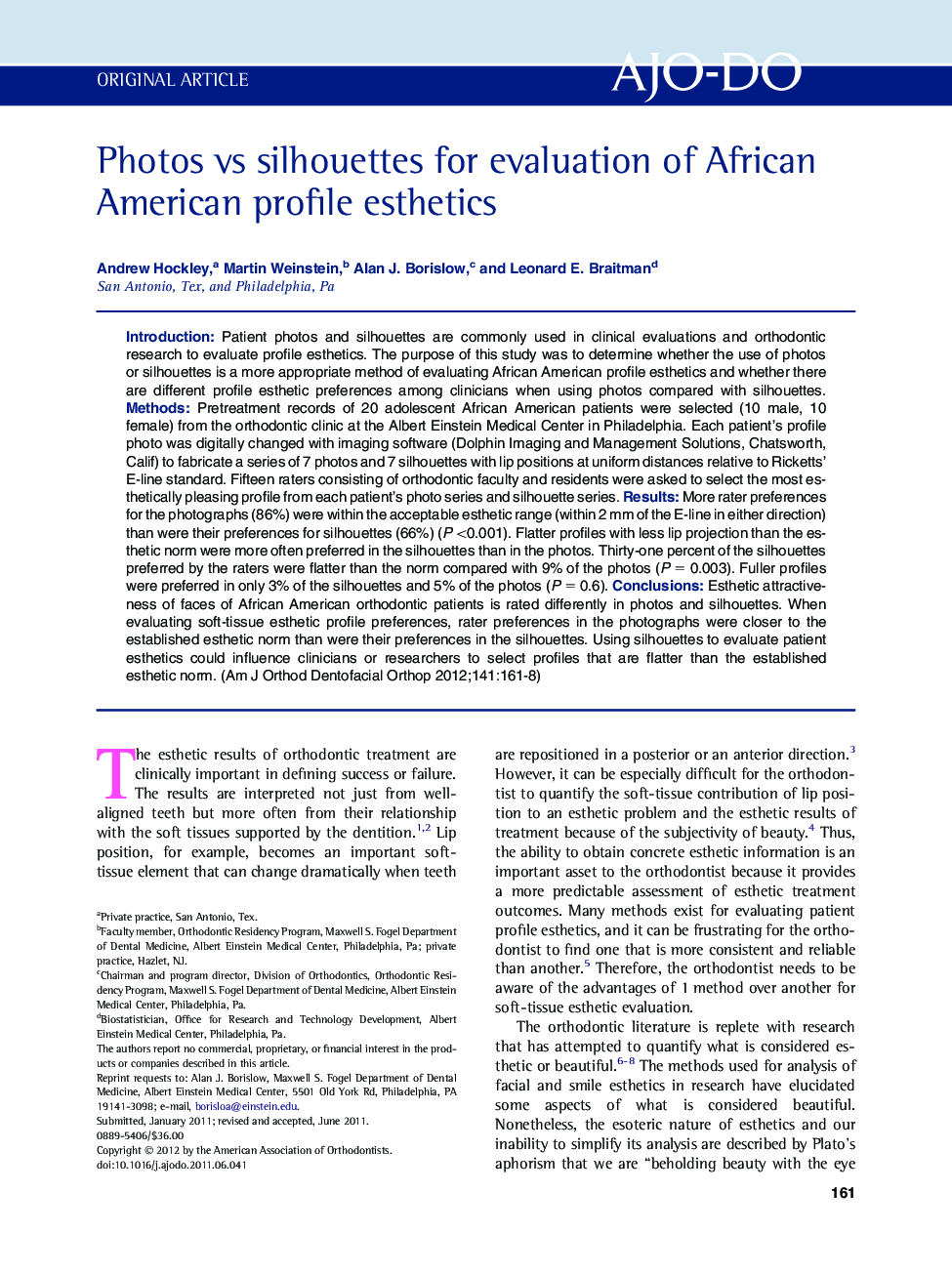| Article ID | Journal | Published Year | Pages | File Type |
|---|---|---|---|---|
| 3117077 | American Journal of Orthodontics and Dentofacial Orthopedics | 2012 | 8 Pages |
IntroductionPatient photos and silhouettes are commonly used in clinical evaluations and orthodontic research to evaluate profile esthetics. The purpose of this study was to determine whether the use of photos or silhouettes is a more appropriate method of evaluating African American profile esthetics and whether there are different profile esthetic preferences among clinicians when using photos compared with silhouettes.MethodsPretreatment records of 20 adolescent African American patients were selected (10 male, 10 female) from the orthodontic clinic at the Albert Einstein Medical Center in Philadelphia. Each patient’s profile photo was digitally changed with imaging software (Dolphin Imaging and Management Solutions, Chatsworth, Calif) to fabricate a series of 7 photos and 7 silhouettes with lip positions at uniform distances relative to Ricketts’ E-line standard. Fifteen raters consisting of orthodontic faculty and residents were asked to select the most esthetically pleasing profile from each patient’s photo series and silhouette series.ResultsMore rater preferences for the photographs (86%) were within the acceptable esthetic range (within 2 mm of the E-line in either direction) than were their preferences for silhouettes (66%) (P <0.001). Flatter profiles with less lip projection than the esthetic norm were more often preferred in the silhouettes than in the photos. Thirty-one percent of the silhouettes preferred by the raters were flatter than the norm compared with 9% of the photos (P = 0.003). Fuller profiles were preferred in only 3% of the silhouettes and 5% of the photos (P = 0.6).ConclusionsEsthetic attractiveness of faces of African American orthodontic patients is rated differently in photos and silhouettes. When evaluating soft-tissue esthetic profile preferences, rater preferences in the photographs were closer to the established esthetic norm than were their preferences in the silhouettes. Using silhouettes to evaluate patient esthetics could influence clinicians or researchers to select profiles that are flatter than the established esthetic norm.
